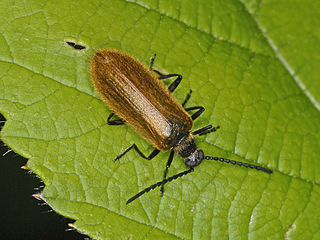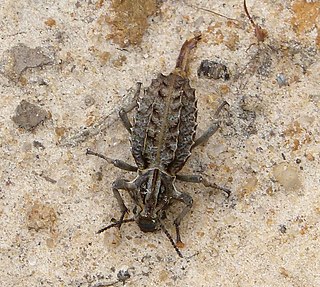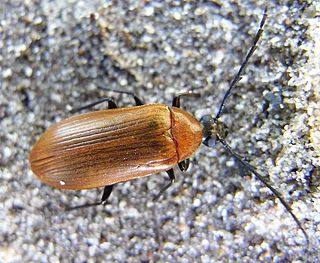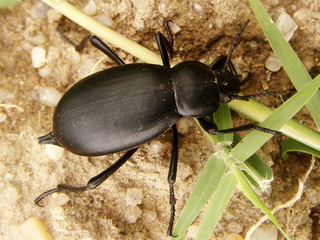
Johan Christian Fabricius was a Danish zoologist, specialising in "Insecta", which at that time included all arthropods: insects, arachnids, crustaceans and others. He was a student of Carl Linnaeus, and is considered one of the most important entomologists of the 18th century, having named nearly 10,000 species of animals, and established the basis for the modern insect classification.

Darkling beetle is the common name for members of the beetle family Tenebrionidae, comprising over 20,000 species in a cosmopolitan distribution.

Tenebrio obscurus, or the dark mealworm beetle, is a species of darkling beetle whose larvae are known as mini mealworms. These insects should not be confused with younger mealworms or with the confused flour beetle.

Pimelia is a genus of darkling beetles in the subfamily Pimeliinae.

Tritoma is a genus of beetles in the family Erotylidae, the pleasing fungus beetles. It is distributed worldwide, mainly in the Old World. There are over 100 species.

Tenebrioninae is the largest subfamily of the darkling beetles (Tenebrionidae), containing flour beetles, among others. Tenebrioninae contains more than 20 tribes.

Gonocephalum is a genus of darkling beetles in the family Tenebrionidae.

Lagria is a genus of beetles in the family Tenebrionidae.

The Sepidiini is a tribe of ground-dwelling darkling beetles (Tenebrionidae), that occurs across Africa, the Mediterranean Basin, the Arabian Peninsula and Mesopotamia. It is composed of many hundreds of species. The larvae of some species are known to damage crops.

Neomida is a genus of darkling beetles in the family Tenebrionidae. There are about 18 described species in Neomida.

Tarpela is a genus of darkling beetles in the family Tenebrionidae. There are about five described species in Tarpela.

Uloma is a genus of darkling beetles in the family Tenebrionidae. There are at least 50 described species in Uloma.

Alphitobius is a genus of darkling beetles in the family Tenebrionidae. There are about 18 described species in Alphitobius.

Sepidiina is a subtribe of darkling beetles in the family Tenebrionidae. There are about 8 genera and more than 110 described species in Sepidiina, found widely distributed in the Mediterranean area and Sub-Saharan Africa. Most species were described from the Horn of Africa.

Pseudocistela is a genus of darkling beetles in the family Tenebrionidae. There are about 18 described species in Pseudocistela, one of which is extinct.

Blaptinae is a subfamily of darkling beetles in the family Tenebrionidae. There are around 300 genera in Blaptinae, divided into 7 tribes.

Erodiini is a tribe of darkling beetles in the subfamily Pimeliinae of the family Tenebrionidae. There are more than 30 genera in Erodiini.

Pimeliini is a tribe of darkling beetles in the subfamily Pimeliinae of the family Tenebrionidae. There are more than 60 genera in Pimeliini, found primarily in the Palearctic.

Scaurini is a tribe of darkling beetles in the family Tenebrionidae. There are at least 4 genera in Scaurini.

Blaptini is a tribe of darkling beetles in the family Tenebrionidae. There are more than 30 genera recognised in the tribe Blaptini.




















